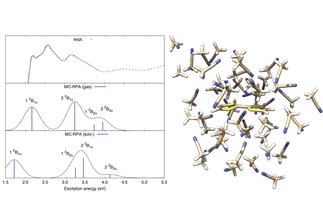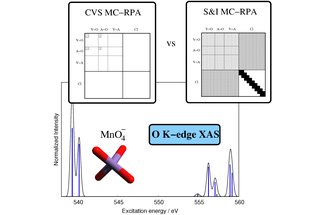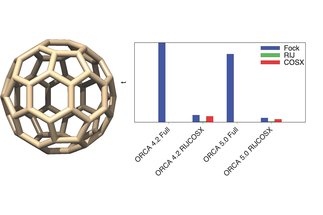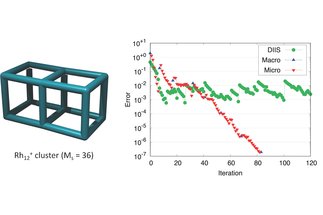Computational Spectroscopy and Multireference Method Development
In our group, we focus on the development and application of methods for computational spectroscopy of molecules with a complicated electronic structure. Our primary interest is electronic spectroscopy of valence and core electrons of open-shell molecules. For such complicated systems, we use so-called multireference methods that solve the Schrödinger equation with multiple determinants on an equal footing. Typical applications of our approaches are UV/Vis spectra and X-ray absorption spectra of organic radicals and transition-metal complexes.
Research Topics:
Our current focal point is combining multireference (MR) methods with linear response (LR) theory. For the LR methods, excitation energies and intensities of the UV/Vis and electronic circular dichroism spectra are
[more]
n one of our recent articles, we show how to adapt the CASSCF-LR method for simulating K-edges of X-ray absorption spectra.[22] The high-energy core-to-valence transitions can be reached either by...
[more]
Our group also works on improving algorithms for computing two-electron integrals efficiently and accurately. Computing and processing two-electron integrals in Fock-matrix calculations is usually the most time-consuming step of Hartree-Fock (HF), DFT, and CASSCF calculations. The Coulomb (direct) and exchange part of the Fock matrix are ...
[more]
One of our ongoing projects is the development of robust second-order methods for converging self-consistent field methods as HF, DFT, and CASSCF. In our recent work, we exploit ....
[more]
Research Reports:



